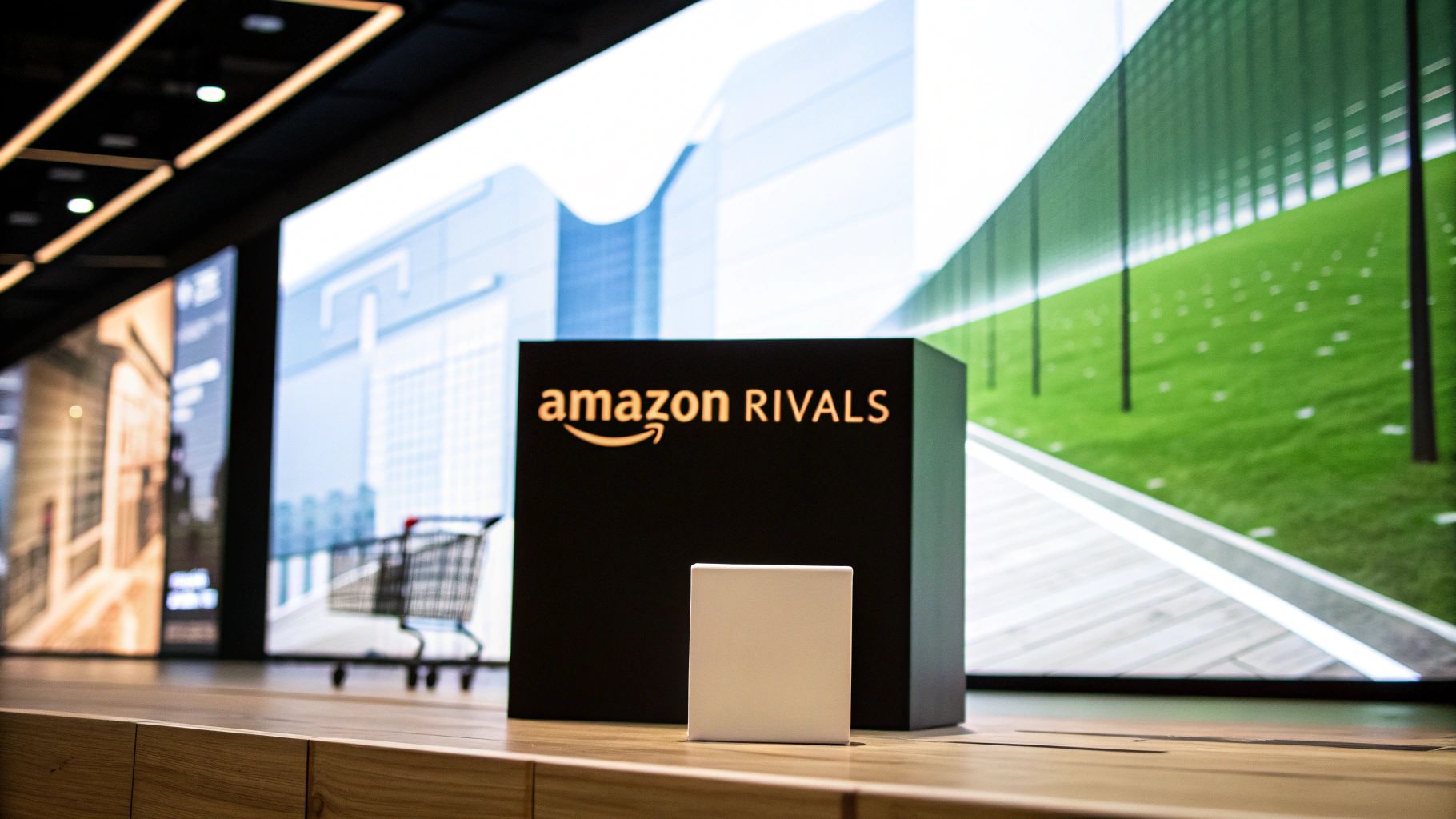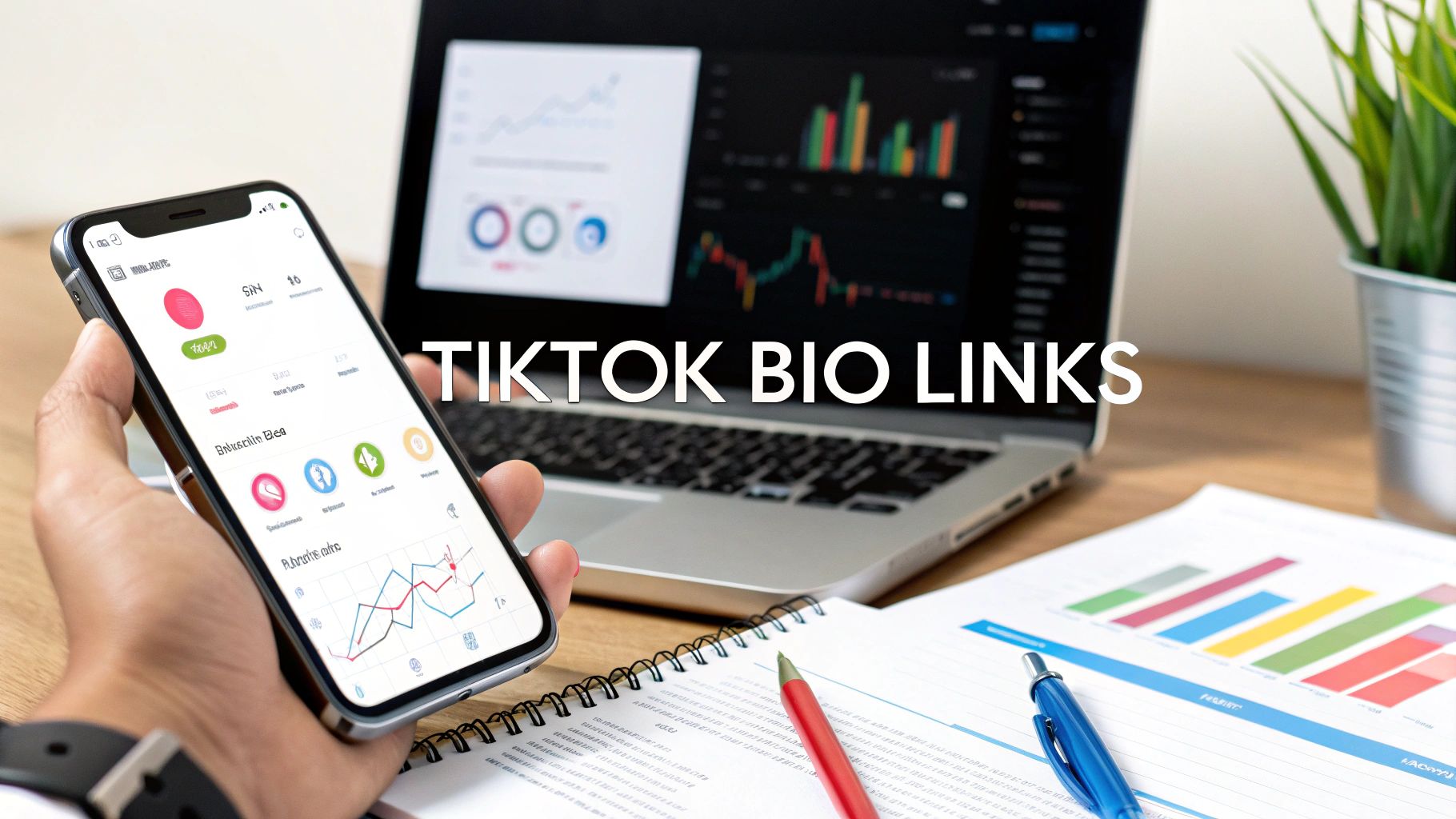Shopify Conversion Optimization: Complete CRO Guide (2025)
March 18, 2025
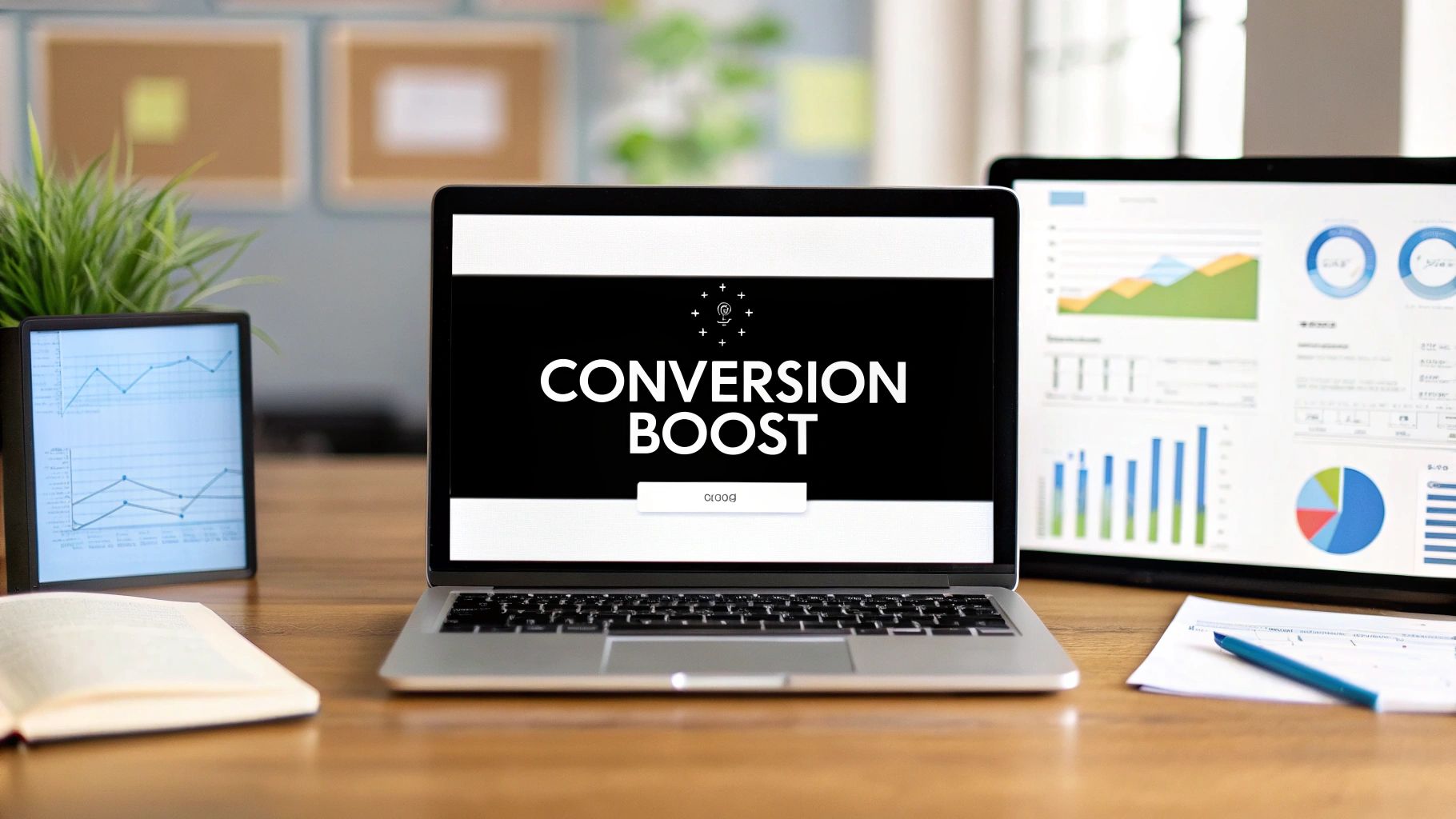
Understanding Shopify Conversion Optimization
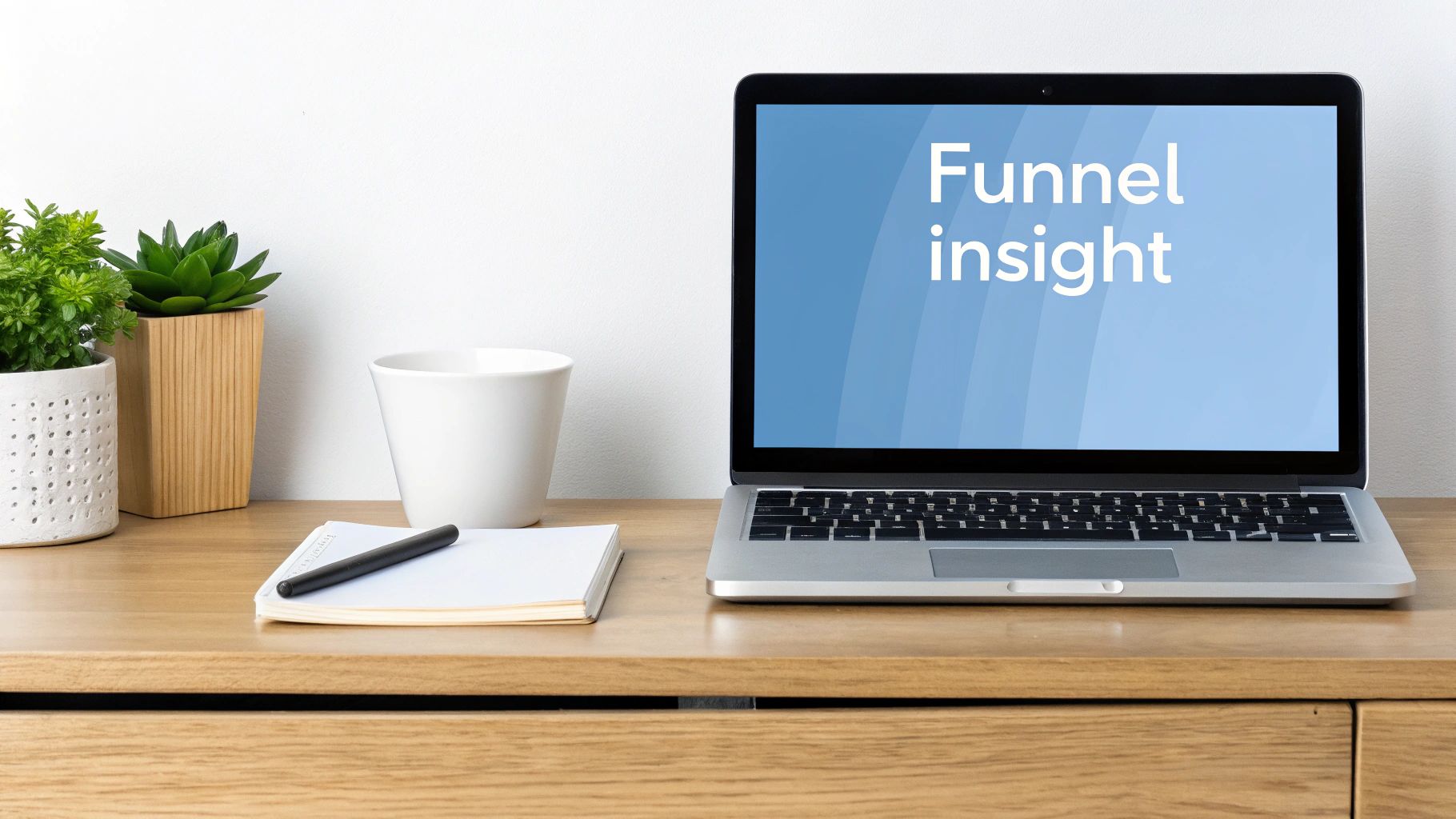
Shopify conversion optimization is the process of improving your online store to encourage more sales. It’s about prompting visitors to take specific actions, called conversions. These actions can include anything from adding an item to their cart to completing a purchase. Every part of your Shopify store contributes to this, from the design and layout to product descriptions and the checkout process. Even small adjustments can make a big difference to your sales.
Why Conversion Rates Matter
Conversion rates directly affect your revenue and business growth. A higher conversion rate means more value from your current website traffic. For instance, imagine you have 10,000 monthly visitors and a 1% conversion rate. You'll make 100 sales. Increase that rate to 2%, and you double your sales to 200 with the same number of visitors.
This shows the importance of optimization. You can increase revenue without spending more on attracting new customers. This is especially valuable in competitive markets where acquiring new customers can be expensive.
Benchmarking and Industry Variations
Understanding the average Shopify conversion rate helps you set realistic goals and evaluate your store’s performance. The average conversion rate for Shopify stores globally is around 1.4%. This number changes depending on factors like your industry, target audience, and location.
For example, health and wellness stores often have higher conversion rates, around 3.1%. Electronics stores typically have lower rates, approximately 1.84%. This is why it's important to compare your store to competitors in your specific niche. Discover more insights about Shopify conversion rates.
Identifying Underperforming Areas
To optimize your Shopify store, you need to find what's not working well. Analyze your website data to see where customers are leaving the sales funnel. Are they leaving on the product page? Are they abandoning their carts at checkout?
Understanding these patterns helps you focus your optimization efforts where they'll be most effective. Consider tools like Hotjar heatmaps to visualize how users interact with your store. This helps you make data-driven decisions to address any problems. Ongoing analysis and improvement are key to maximizing your sales potential.
Enhancing User Experience For Better Conversions
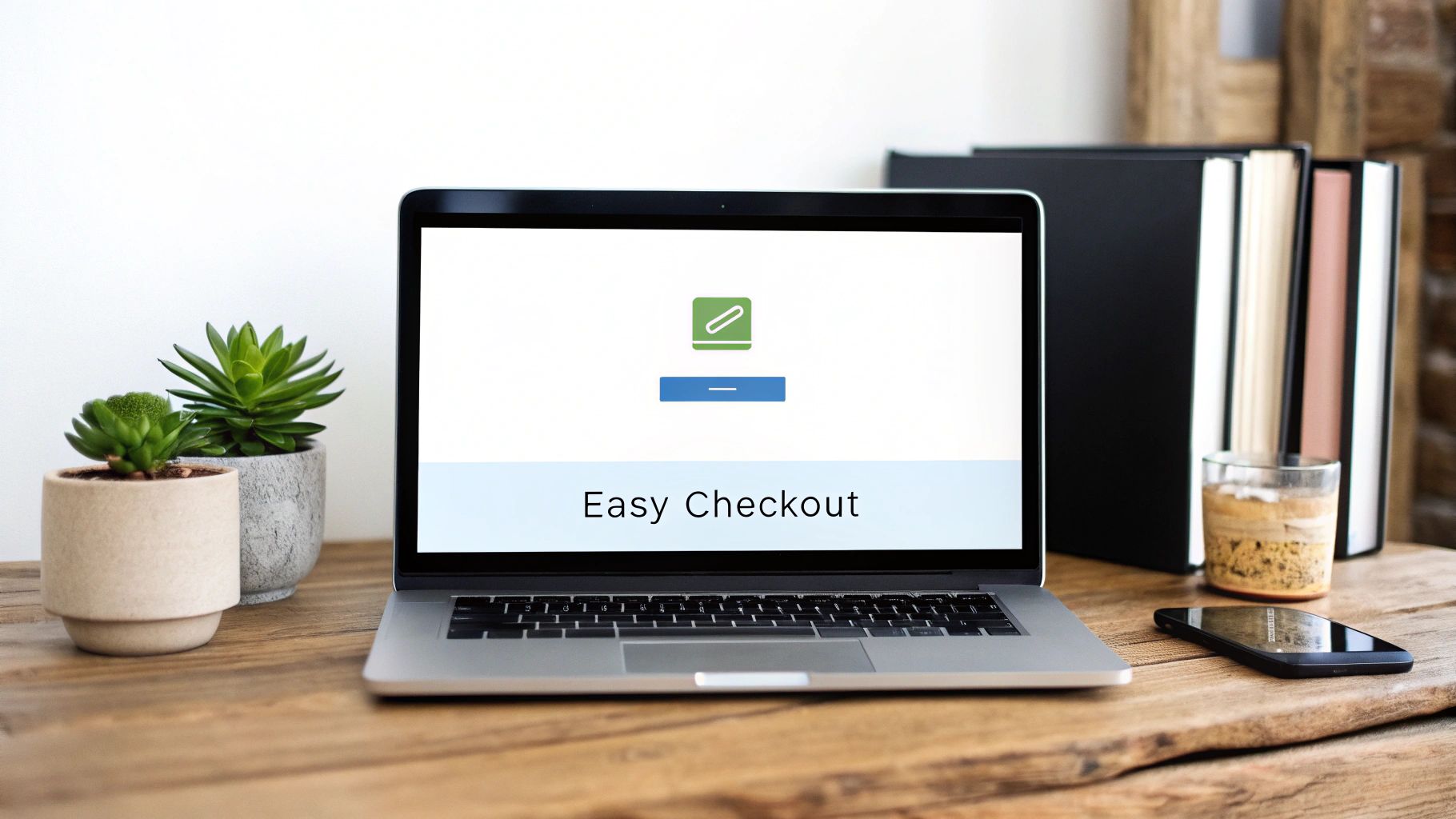
A seamless and enjoyable user experience (UX) is crucial for Shopify conversion optimization. Think of your online store as a physical shop. Customers are more likely to buy if they can easily find what they need in a pleasant environment. This translates directly to the online world. A positive UX encourages browsing and ultimately, purchasing.
Responsive Navigation and Clear Calls to Action
Intuitive navigation is the cornerstone of any positive UX. Customers should effortlessly browse product categories and find specific items. A clear menu structure, combined with a robust search bar, makes product discovery a breeze. This ensures a smooth and enjoyable shopping experience.
Clear call-to-action (CTA) buttons are also essential. They guide visitors towards desired actions. Instead of a generic "Buy Now" button, try more specific CTAs like "Add to Cart" or "Shop Now." This small change can significantly improve click-through rates.
Furthermore, ensure your CTAs are visually distinct and strategically placed. This helps capture attention and encourages conversions. Effective CTAs are a vital part of guiding users through the purchase journey.
Visually Appealing Design and Minimizing Distractions
A visually appealing design enhances the shopping experience and builds brand trust. However, balance aesthetics with functionality. A cluttered layout with excessive banners or pop-ups can be distracting.
Instead, opt for a clean, minimalist design. Prioritize product visibility and ease of use. White space, high-quality product images, and consistent branding create a professional and trustworthy image.
Less is often more when it comes to website design. Prioritize clarity and focus on showcasing your products effectively. Consider reading more about selling on Instagram with Shopify.
Optimizing Images and Streamlining Layouts
Optimizing images is crucial for both aesthetics and performance. Large, unoptimized images slow down page load times. This leads to frustrated customers and lost sales. Compressing images and using appropriate file formats improves load times without compromising quality.
Streamlining layouts by removing unnecessary elements also enhances the user experience. A well-structured layout guides visitors through the sales funnel, from browsing to buying.
Website speed is a critical factor in Shopify conversion rates. A slow website can deter potential buyers. Optimizing images, disabling unused apps, and using CSS for backgrounds can significantly improve load times. Learn more about optimizing Shopify conversion rates. Even minor design tweaks can impact user behavior and trust, leading to higher engagement and increased sales.
Leveraging Mobile Optimization and CRO Strategies
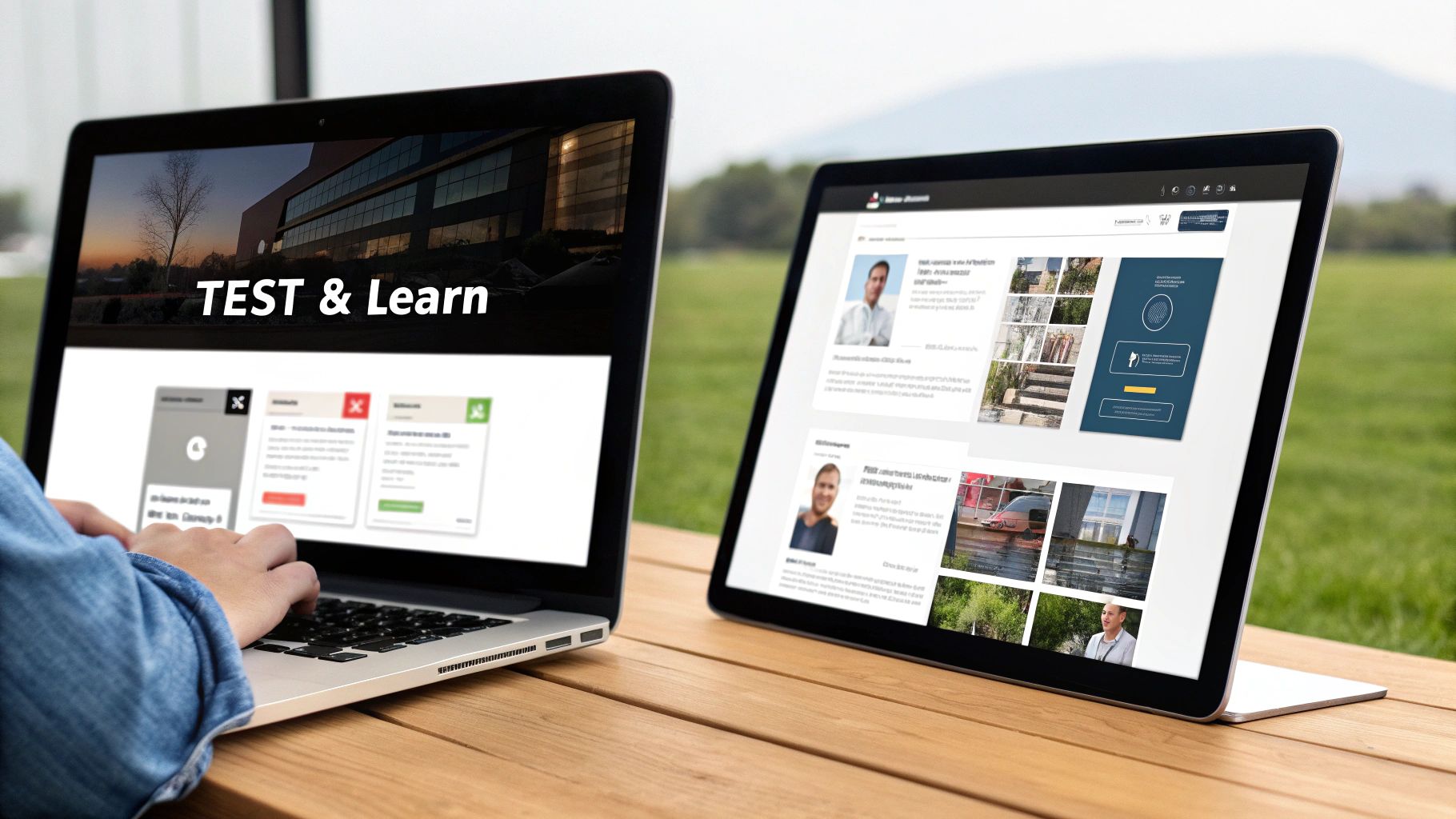
Mobile commerce now dominates online shopping. Optimizing your Shopify store for mobile users is essential for driving conversions. A seamless mobile experience encourages browsing and boosts sales, directly impacting your revenue.
Designing Mobile-First Experiences
When designing your Shopify store, start with a mobile-first approach. This means prioritizing the mobile user experience from the beginning. Think about how your store looks on smaller screens and optimize accordingly.
Ensure your website theme is responsive and adapts to different screen sizes. This includes elements like images, text, and navigation menus. Test your store on a variety of devices to ensure a consistent and user-friendly experience.
Also, consider touch-responsive design. Larger buttons and easy-to-navigate menus are crucial for a positive mobile experience. This can significantly impact whether a customer gets frustrated or completes a purchase.
Streamlining Mobile Navigation
Navigation is even more critical on smaller screens. Simplify your menu structure for mobile users and avoid overwhelming them with too many options.
Prioritize key categories and use a clear, hierarchical structure. A hamburger menu is a popular solution, condensing navigation into a compact and easily accessible format.
This streamlined approach allows users to quickly find what they’re looking for, minimizing frustration and improving the shopping experience.
Implementing Broader CRO Strategies
Mobile optimization is just one part of the overall picture. Effective Conversion Rate Optimization (CRO) involves a holistic approach, using various strategies to enhance the user experience and drive conversions.
For example, integrating customer reviews builds trust and encourages purchases. Highlight positive testimonials and ratings on product pages. This social proof can be highly influential for hesitant buyers.
Well-written product descriptions and a simplified layout can also significantly improve conversion rates. CRO is vital for Shopify stores. Key strategies include simplifying navigation, mobile optimization, compelling product descriptions, and customer reviews. Further enhancements like SEO and streamlined checkout processes also contribute to boosting conversion rates. Explore this topic further. All these tactics create a user-friendly and persuasive online store, ultimately leading to higher conversions.
Product Pages And Checkout Optimization
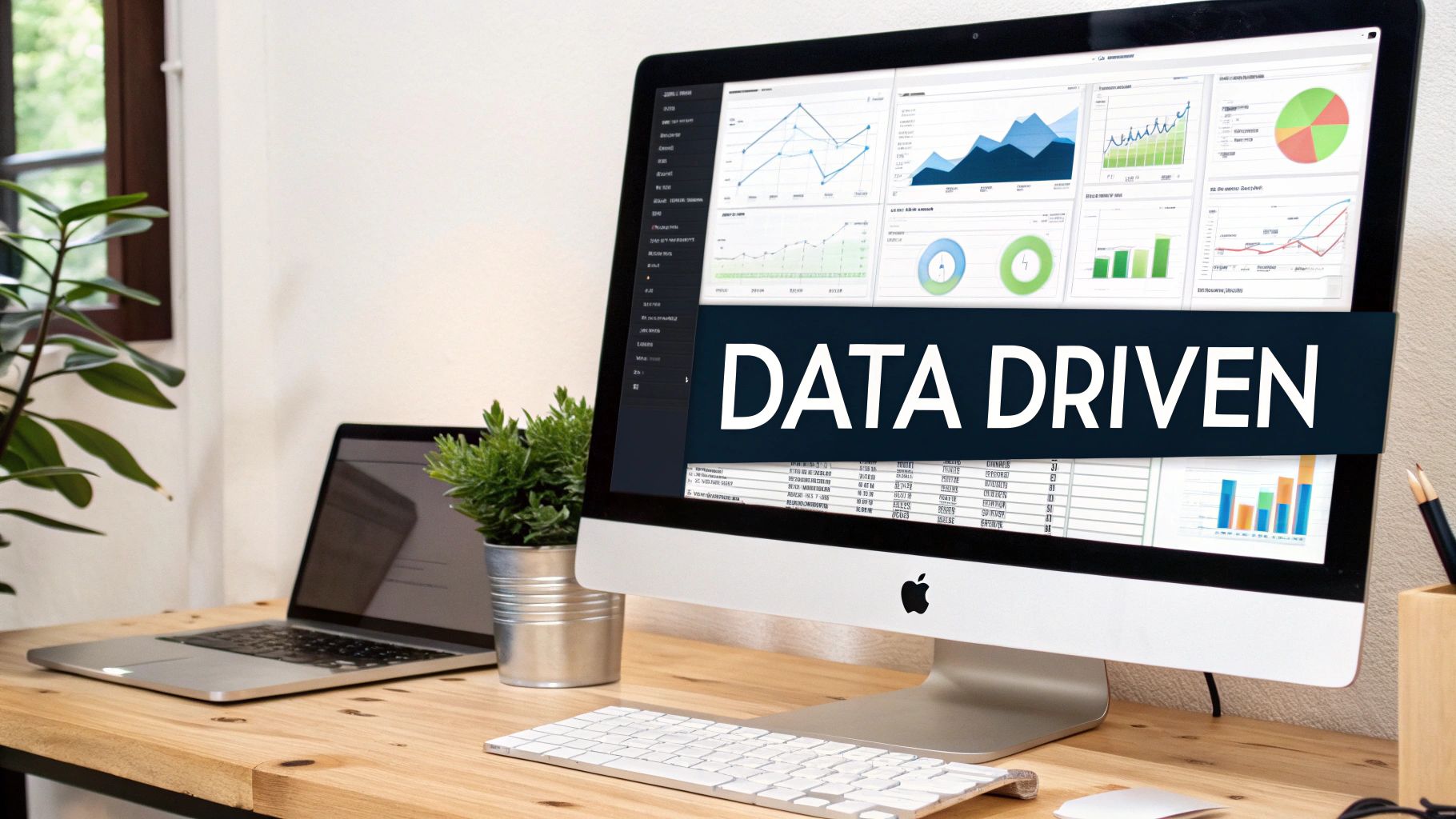
This section focuses on optimizing the core of your Shopify store: your product pages and the checkout process. These two areas are the most crucial steps in the customer journey. They directly impact your conversion rate and overall sales. Think of these pages as the final steps a customer takes in a physical store. A disorganized display and slow checkout lines will deter even the most interested buyer.
Crafting Compelling Product Pages
Your product pages are your digital storefront. They need to inform and excite visitors enough to add items to their carts. This involves using high-quality product descriptions, persuasive visuals, and social proof, such as customer testimonials.
-
High-Quality Product Descriptions: Instead of simply listing features, explain the benefits. Focus on how the product solves a customer’s problem or improves their life. Keep the language clear, concise, and avoid jargon.
-
Persuasive Visuals: High-resolution images and videos are crucial. Show your product from multiple angles and demonstrate its uses. Lifestyle shots can help illustrate how the product fits into a customer's everyday life.
-
Customer Testimonials: Build trust by showcasing positive reviews. Testimonials are a powerful way to encourage potential buyers, showing them how others have enjoyed the product.
For example, a clothing store could showcase a model wearing different outfits in various settings, include detailed fabric information, and display customer reviews. This provides the visitor with a comprehensive understanding of the product and its value.
Streamlining The Checkout Process
A complicated checkout process is a major cause of cart abandonment. Streamlining this stage is vital for Shopify conversion rate optimization. This means minimizing steps, reducing the number of required fields, and offering multiple payment options.
-
Minimize Checkout Steps: A lengthy checkout process can be overwhelming. Strive for a clear and concise checkout with as few steps as possible.
-
Reduce Required Form Fields: Request only necessary information. Too many form fields can frustrate customers and lead them to abandon their purchase.
-
Offer Multiple Payment Methods: Giving customers various payment options like credit cards, PayPal, and "buy now, pay later" services accommodates their preferences.
Consider offering express checkout options such as Shop Pay, which pre-fills customer information, significantly reducing checkout time. This convenience can greatly improve conversion rates.
To illustrate, a streamlined checkout guides customers smoothly through the purchase, much like a well-oiled machine.
Comparison of Checkout and Page Designs
Before you choose a design for your checkout and product pages, it’s helpful to compare the pros and cons of various design approaches. The table below outlines some key considerations.
| Design Approach | Feature Focus | Pros | Cons |
|---|---|---|---|
| One-Page Checkout | Speed and simplicity | Reduces friction, faster checkout | Limited space for upsells/cross-sells |
| Multi-Page Checkout | Detailed information gathering | Opportunity for personalization and upsells | Can feel longer, potentially leading to abandonment |
| Minimalist Product Page | Clean design, product-focused | Improved focus, faster loading times | May lack detailed information for some customers |
| Detailed Product Page | Comprehensive information | Answers all customer questions, builds trust | Can be overwhelming, slower loading times |
By carefully weighing these options, you can select the strategy that best suits your target audience. Remember, testing and refining your approach are key to finding the perfect balance for your store.
Optimizing both product pages and the checkout process creates a synergistic effect, resulting in higher conversions and boosting your Shopify store’s overall success.
A/B Testing And Data-Driven Decisions
After implementing various optimization strategies, the next crucial step in Shopify conversion optimization is A/B testing. This process lets you make informed decisions based on real data, removing the guesswork. Think of A/B testing as a scientific method for your store, helping you understand what truly resonates with your audience.
Understanding A/B Testing Methodology
A/B testing, also known as split testing, compares two versions of a webpage element to determine which performs better. You present version A (the control) and version B (the variant) to different segments of your audience. Analyzing key metrics reveals which version leads to higher conversions.
For instance, you could test two different headlines on your product page. One might focus on product features, while the other highlights the benefits for the customer. By tracking which headline leads to more add-to-carts, you can pinpoint the most effective approach.
Running Effective A/B Tests on Your Shopify Store
A/B testing applies to numerous elements on your Shopify store, from button colors and placement to product descriptions and images. The key is focusing on one element at a time to isolate the impact of each change.
Here's a breakdown of how to run an effective A/B test:
- Identify the element to test: Choose an element you suspect is impacting your conversion rate.
- Create a variant: Develop an alternative version of the chosen element, based on a hypothesis about what might improve performance.
- Split your traffic: Direct a portion of your traffic to the control version and the remaining portion to the variant.
- Monitor key metrics: Track metrics like conversion rate, bounce rate, and time spent on page.
- Analyze results and implement: After a suitable timeframe, review the data to determine the better-performing version. Implement the winner permanently.
Analyzing A/B Testing Metrics
Analyzing A/B test data is crucial for making data-driven decisions. This involves examining key performance indicators (KPIs) and determining statistical significance.
The following table presents key performance indicators from various A/B tests conducted on Shopify stores, including control and variant conversion rates, as well as percentage improvements that highlight the benefits of data-driven decisions.
| Test Element | Control Conversion | Variant Conversion | Improvement% |
|---|---|---|---|
| Call-to-Action Button Color | 1.5% | 2.1% | 40% |
| Product Page Headline | 2.0% | 2.5% | 25% |
| Checkout Button Placement | 3.0% | 3.3% | 10% |
This table demonstrates the impact of seemingly minor changes. For example, a simple button color change can significantly increase conversions. This highlights the value of A/B testing in optimizing your Shopify store for maximum performance.
Case Studies and Real-World Examples
Many case studies demonstrate the effectiveness of A/B testing and data-driven decisions. For example, one Shopify store saw a 20% conversion rate increase by simply repositioning its "Add to Cart" button. Another store boosted its average order value by 15% after A/B testing different product recommendations.
These examples highlight the potential for substantial improvement through structured testing. By continuously iterating and optimizing based on data, you can create a highly effective Shopify store that consistently drives conversions. Remember, conversion optimization is an ongoing process. Continue experimenting with different variations to further refine your store and stay ahead of the competition.
Final Tips And Key Takeaways
This section summarizes key strategies for Shopify conversion optimization, offering practical takeaways to improve your store's performance. By focusing on these core principles, you'll be well-positioned to boost your conversion rates and drive revenue growth.
Prioritize Mobile Optimization
Mobile commerce is essential in today's market. Adopting a mobile-first approach is key for reaching online shoppers. Make sure your site is fully responsive and test it across various devices. Streamlining navigation on smaller screens enhances the user experience and encourages conversions on mobile. Think of it like organizing a small boutique – you want to make the most of the space and highlight key items for easy browsing.
Refine Your Product Pages
Engaging product pages are crucial for conversions. Use high-quality images and videos to showcase your products effectively. Write clear, benefit-driven descriptions that answer customer questions and emphasize value. Including customer testimonials and reviews builds trust and motivates purchases. Imagine your product page as a virtual salesperson – it needs to present the product attractively and convince the customer of its value.
Streamline The Checkout Experience
A smooth checkout process minimizes obstacles and reduces cart abandonment. Simplify the steps and minimize required fields. Offer a variety of payment options and consider express checkout solutions like Shop Pay. Think of the checkout as the final step in a purchase journey – make it easy for customers to complete their transaction.
Embrace Data-Driven Decisions with A/B Testing
A/B testing allows you to make informed choices based on real data. Experiment with elements such as headlines, button colors, and calls to action to discover what works best for your audience. By regularly analyzing results, you can continuously optimize your store and improve your conversion rates. Think of A/B testing as your guide to better performance.
Key Takeaways for Success
- Prioritize User Experience: A positive experience leads to higher engagement and conversions.
- Optimize for Mobile: Cater to the increasing number of mobile shoppers.
- Craft Compelling Product Pages: Emphasize product benefits and build trust.
- Simplify the Checkout: Reduce friction and minimize cart abandonment.
- Embrace A/B Testing: Make informed, data-driven decisions for continuous improvement.
By implementing these strategies and continuously refining your approach, you can significantly improve your Shopify store's performance and reach your business objectives.
Ready to enhance your Shopify store's conversions? Start building high-converting shoppable links with LinkShop today!

